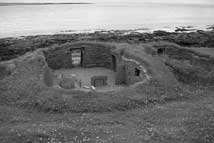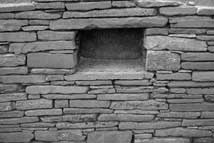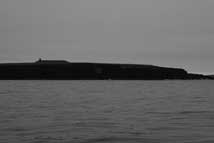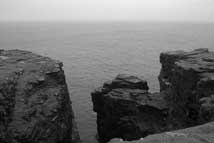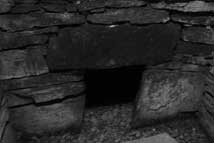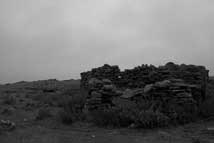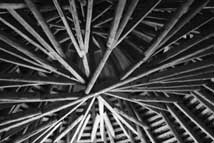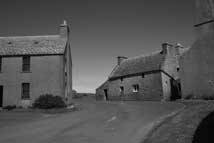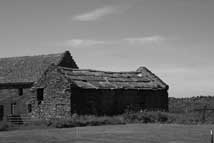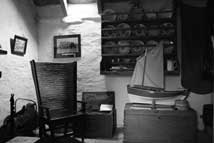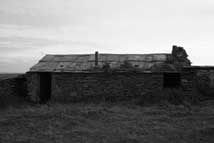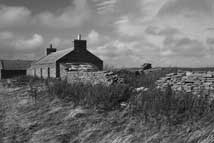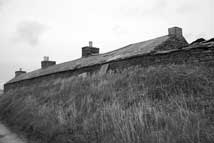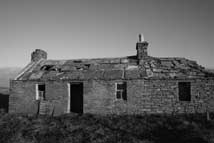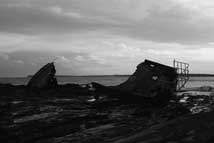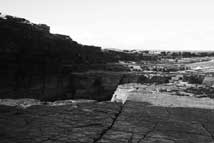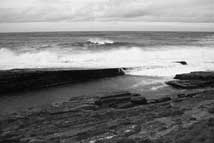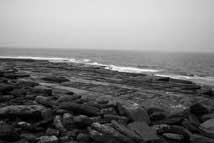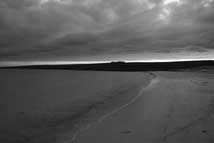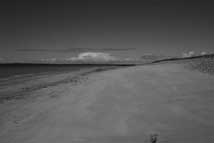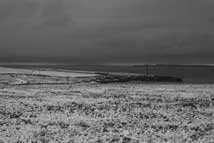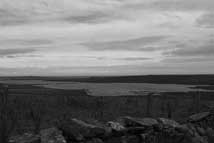
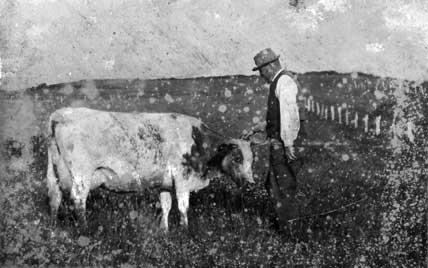 |
||||||||
| PAPA WESTRAY --- PAPAY --- PAPEY IN MEIRI | ||||||||
| PAPAY is a local name of the island PAPA WESTRAY - one of the most remote Northern Isles of Orkney, and journey to Papay can be as exiting as journey to the Moon. The Island is 4 miles long and 1 mile wide with lash green treeless hills and stone houses, ruins of great samples of vernacular architecture and historical monuments scattered around and the coastline of sea-cliffs, flat rocks and sandy beaches. Northern Sea meets Atlantic here at the northern tip of the island - Mull Head and North Hill is a busy nesting ground for a variety of sea birds. The first know house on the Island, Knap of Howar, was build 6000 years ago and the history can be traced from there through Neolithic sites (Chambered Cairn on Holm of Papay), numerous ruins of Pictish brochs (Munkerhoose and St.Tredwell), Norse Placenames and Nausts all around the island, 12 century St. Boniface Kirk, St. Tredwell Chapel, Holland Farm, other landmarks and the Island's Legends | ||||||||
| PAPAY is also known as PAPEY IN MEIRI in the Orkneyinga Saga | ||||||||
| HISTORY | ||||||||
| 3500BC Knap of Howar - the oldest preserved house in northern Europe |
||||||||
| 8c.
Nechtan and Triduana in the 8th century, the Pictish King Nechtan visited Papay and attempted to seduce a young woman from the island named Triduana, who in response gouged her own eyes out. Nechtan was known as the King Philosopher. He abdicated in 724 and became a monk. Triduana became saint and chapel St. Tredwell was build in Papay, the place of pilgrimage for many centuries. It seems Nechtan and Triduana could be a nice couple, but the King was a pagan at that time. Triduana was a nun. It looks like ugly sisters couldn't let it happen and helped a lot in reapping out Triduana's eyes and presenting in to the King. Since 8th century no other cases of similar self harm were recorded in Papay |
||||||||
| 8c.
Findan, having been captured by a Viking slave-raiding party who had stopped on a small, uninhabited island, escaped to a larger island close by, where he took refuge with a bishop; Thomson has suggested the two islands could be the Holm of Papay and Papay itself (Thomson 1986, 280-3; Lowe 1998, 8-9; Thomson 2001, 50). Lamb has also seen the island as the seat of a ninth- century bishop |
||||||||
| 11c Rognvald Brusason (born 1011 - died 1046), son of Brusi Sigurdsson, was Earl of Orkney jointly with Thorfinn Sigurdsson from about 1037 onwards Rognvald was taken by his father to Norway, to the court of Olaf Haraldsson, when Brusi and Thorfinn went there to have the inheritance of Einar Wry-mouth's third-share of the Earldom settled. Olaf kept Einar's share for himself, appointing Brusi to administer it, and kept Rognvald at his court. The Orkneyinga Saga says of Rognvald: Rognvald was one of the handsomest of men, with a fine head of golden hair, smooth as silk. At an early age he grew to be tall and strong, earning a great reputation for his shrewdness and courtesy... Rognvald was a supporter of Olaf Haraldsson, later Saint Olaf, sharing his exile in Kievan Rus, and helping his brother Harald Sigurdsson, better known as Harald Hardraade, escape after the Battle of Stiklestad in 1030. While Harald went on to Constantinople, Rognvald and other exiles remained in Rus, in the service of Yaroslav the Wise. Rognvald returned to Norway with Olaf's son Magnus the Good in 1035. While Rognvald was abroad, his father had died and Thorfinn Sigurdsson was ruling all of the Earldom of Orkney. Rognvald asked King Magnus for his third part of the Earldom, and Magnus agreed, giving him three ships and granting him the stewardship of Magnus's own third share. When Rognvald arrived in Orkney, he sent to his uncle Thorfinn asking him for the two thirds of the Earldom which Magnus had given him. Thorfinn agreed to give Rognvald his father's third, and the third which Magnus claimed into the bargain, although he claimed not to recognise Magnus's claim and presented this as a gift in return for Rognvald's assistance. and Rognvald worked closely together for eight years, fighting against enemies in the Hebrides and raiding Scotland and England He was murdered in Papa Stronsey and buried in Papa Westray. The Orkneyinga Saga offers this assessment of Rognvald: Everyone agrees that of all the Earls of Orkney he was the most popular and gifted, and his death was mourned by many. |
||||||||
| 12c In the twelfth century the ‘great lady’ and ‘wise woman’ called Ragna and her son, Thorstein, ‘a man of fine character’ had an estate in Papa Westray, although they seem to have lived in North Ronaldsay (Orkneyinga Saga, Taylor,218,246). This estate was probably to the south east of Holland, comprising the farms of Backaskaill and Breckaskaill which were believed by Clouston to make up the bu of Ragna and Thorstein,: - the two names perhaps indicating the splitting of an early udal property (probably called originally Skaill) between two heirs (Clouston 1927, 49; Marwick 1952, 45) Although there are now no surface indications, an old settlement site lying between the two extant farms is known to have existed (RCAHMS 1983, 14, no. 12; NMRS no. HY45SE41, OR 787, HY 4862 5085). Backaskail forms the main landing place on the west side of the island (Marwick 1925, 44; Marwick 1952, 45). |
||||||||
| 1472 Orkney annexed to the Scottish Crown, following the failed payment of a dowry for James III's bride, Margaret of Denmark |
||||||||
| 1588 Survivals from one of the Spanish Armada' ships wrecked near North Ronaldsay established a settlment in Westray and as a legend goes buried a treasure at North Hill in Papay |
||||||||
| 16c Sometime prior to 1595, the king’s land in Papay had been feued out to the deceased Gilbert Balfour of Westray (Marwick 1925, 44). |
||||||||
| 17c
In 1614, the leading families were Leasks and Howisons |
||||||||
| 1636 Thomas Traill purchased the estate of Holland in Papa Westray and by the eighteenth century Traills were the sole landowners on the island |
||||||||
| 1813
The last Great Auk being killed by local man William Foulis an Fowl Craig. |
||||||||
| 1909 John D. Mackay (1909, Maeback, Papa Westray, Orkney), Orcadian school-teacher, taught on Stronsay and North Ronaldsay before working as headmaster of Sanday School between 1946 to 1970. He is remembered locally for writing to The Times in 1967 suggesting that Orkney and Shetland be returned to Norway after five centuries in pawn to Scotland. His letter brought publicity to Orkney and boosted some residents' morale, at a time when absorption into the administrative structure of the Scottish Highlands seemed destined to cause a reduction in the powers of the local authorities. A stream of local publicity efforts followed. |
||||||||
| 1917 | ||||||||
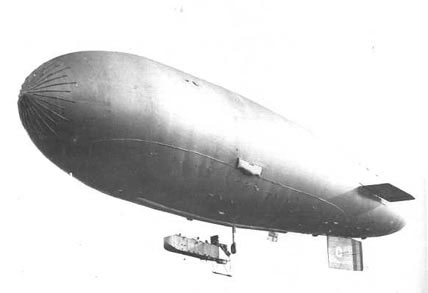 |
||||||||
| The
loss of the Airships SSP 2 Airship SSP 2 left Caldale for operations to the north of the Orkney Islands at 08.50 on the morning of 26th November 1917. The weather on the day was considered favourable. On board were: Pilot Ft Lt Edward Bourchier Devereux Engineer AM 1 Albert Edwin Scott W/T LM (W/T) Edgar James Wilson. By 10.00 the winds had freshened and the Airship, which was 17 miles NNW of the base sent a radio message saying she was intending to return to base and giving an ETA of 10.30. Ft Lt Devereux brought SSP 2 down to 200 feet hoping to find lighter winds. Things appear to be going ok with regular messages being sent back to base, one at 10.30 giving a new ETA of 11.30 and an update saying wind had increased to 30 knots. At 11.20 the SSP 2 reported engine failure and was going to make a free balloon landing in the sea to the NE of Papa Westray and requested assistance. HMS Leopard and several drifters were patrolling in the area and at 11.40 a lookout on HMS Leopard reports seeing an Airship land on the sea then explode. Despite a search which went well on into the evening nothing of the crew or airship was found |
||||||||
| .. more history is coming soon | ||||||||
| WILDLIFE
|
||||||||
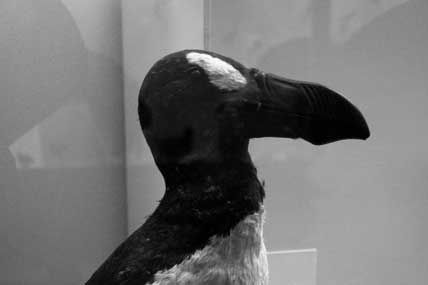 |
||||||||
| At the northern tip of the island lies North Hill 49 metres (161 ft) the island's highest point and an RSPB nature reserve. Many sea birds breed on the island, including Arctic terns and Arctic skuas. It was one of the last places where the Great Auk was found, the last individual being killed in 1813 by local man William Foulis an Fowl Craig. The reserve is also home to the rare and tiny purpled-flowered Mey-flooer (Scottish primrose Primula Scotica) | ||||||||
| KNAP OF HOWAR | ||||||||
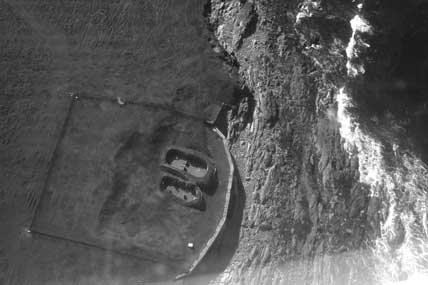 |
||||||||
|
||||||||
| The Knap of Howar Neolithic farmstead which is the oldest preserved house in northern Europe, dating from around 3500 BC. The homestead, which consists of two roughly rectangular stone rooms side by side, linked by an internal door, and with doors to the outside at the west end, is partly subterranean, and virtually complete to roof height. Examples of the round bottomed Unstan ware have been found here, and provided the key to dating the settlement. | ||||||||
| ST TREDWELL CHAPEL & BROCH | ||||||||
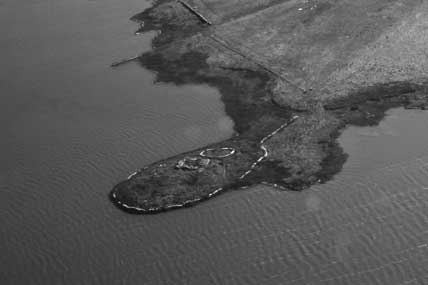 |
||||||||
| According
to tradition, in the 8th century, the Pictish King Nechtan attempted
to seduce a young woman from the island named Triduana, who in response
gouged her own eyes out. She later became abbess of a nunnery at Restalrig,
now part of Edinburgh, and was in due course, canonised as Saint Tredwell.
A chapel was consecrated to her on Papay and became a place of pilgrimage
for people with eye complaints. The Chapel was build on the ruins of Pictish Broch traces of which can be well seen |
||||||||
| ST. BONIFACE KIRK | ||||||||
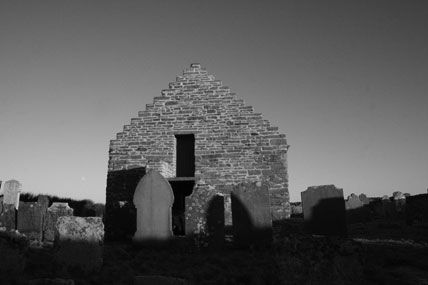 |
||||||||
| St
Magnus cathedral in Kirkwall and the little church of St Boniface
on Papa Westray – one of the smallest and most northerly islands
of the Orkney archipelago – are the only two medieval churches
in Orkney which have survived into the 21st century intact and still
in use for worship. A late 7th-century incised cross found in the kirkyard at St Boniface is the earliest piece of hard evidence that Christianity had arrived in the Northern Isles. Although Papa Westray seems remote when viewed from the modern perspective of motor-car based communications, for all the previous centuries of sea travel it was on a main highway. It is likely that the first church on the island was part of a monastery, built as springboard for missionary expeditions to both Orkney and Shetland. Sometime in the 12th century St Boniface became the parish church, as it remained for 800 years until 1929 when it became redundant and was abandoned. For the next 60 years the little stone church and its unusual early 18th-century furnishings slid into dereliction until at last restoration was undertaken by a team of local builders. In June 1994 St Boniface was rededicated (after a pilgrimage around the historic places of the island which has become an annual event) and is used again for occasional services. Surrounded by fields and the sea, it is a peaceful place; the only sounds one usually hears there are the wind, the waves crashing on the shore below, or birdsongon a summer evening. The remarkably good acoustic makes it an ideal place for concerts (even if the performers sometimes have to contend with the Orkney wind!): Emma Kirkby and Anthony Rooley have performed Dowland and Monteverdi, and in August 2007 Alfia A performed her “Bach marathon”, the six suites, in its intimate small space and realised it was where she wanted to record them. |
||||||||
| Jocelin Rendall, 2008 | ||||||||
| HOLM of PAPAY with CHAMBERED CAIRN | ||||||||
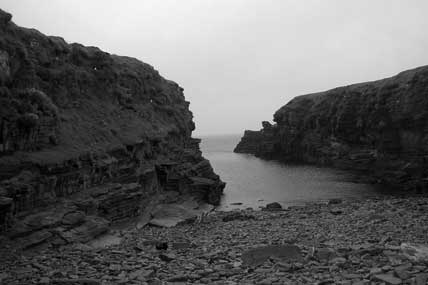 |
||||||||
|
||||||||
| Neolithic chambered cairn on the small desert island of Holm of Papay, a little east of Papay itself (and readily visible from the larger island). The long, stalled cairn, built of local stone, was once a communal burial place for the bones of an ancient community. | ||||||||
| NAUSTS OF PAPAY | ||||||||
| Boat
nausts-unroofed or roofed boat shelters contrived on or above the
shoreline with an attendant slipway and landing place-is well attested
for the Norse period and earlier in Norway. About 18 nausts sites were established on the shoreline of Papay More information on Nausts of Papay can be found in The lniernaiional Journal of Nautical Archaeology and Underwater Exploration (1990) 19.4: 3 17-325. Boat naust survey on Papa Westray, Orkney by Anne Bowman |
||||||||
| HOLLAND FARM and FOLK MUSEUM | ||||||||
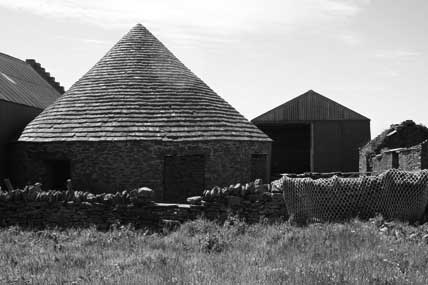 |
||||||||
|
||||||||
| Formerly
the home of the Trail family, lairds of the island for three centuries,
this is perhapsthe most extensive traditional steading in Orkney.
It features a doo'cot, mill tramp and corn-drying kiln. Small Museum
at old Bothy, created by John o' Holland, is a great collection of
Papay artefacts and guide into the island's history About the history of Holland Farm and Papay read: A Jar of Seed Corn: Portrait of an Island Farm by Jocelyn Rendall, Orcadian Ltd 2002, ISBN-10: 1902957164. A fascinating, well-researched work on the history of Holland farm which also tells the story of the island and its people. Once home to a powerful land-owning dynasty that crashed into spectacular bankruptcy, Holland embodies the history of Papay since medieval times. Full of pictures and intriguing details this is an engaging account of the island's evolution from virtual feudalism (as recently as Victorian times) to today's fragile but independent and egalitarian community |
||||||||
| THE OLD KELP STORE | ||||||||
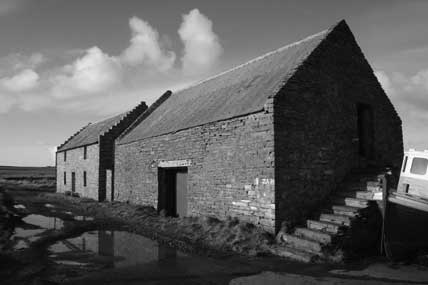 |
||||||||
| In
several parts of the island one can see shallow, circular depressions
near the shore. These are kelp kilns, the only sign of an industry
that domonated the Orkney economy in the late 18th and early 19th
centuries. The two-storey buildings near the old pier on the east side of the island were originally kelp stores and the enclosure at the head of the pier was a boathouse for the "Mary Traill" which transported the kelp... |
||||||||
| Jocelin
Rendall. Papay - A Guide to Places of Interest. Papay Publications
1992 ISBN 1-874755-02-7 |
||||||||
| THE OLD PIER | ||||||||
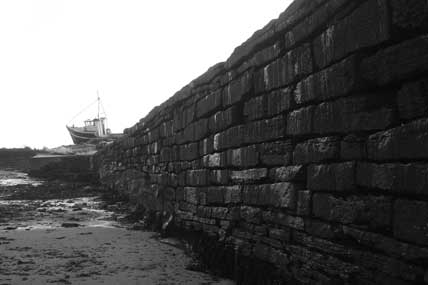 |
||||||||
| Before the new pier was build in 1970, cargo was transported once a week to the old pier. The old pier is still busy with local boats and as a link with Holm of Papay | ||||||||
| THE WATERMILL | ||||||||
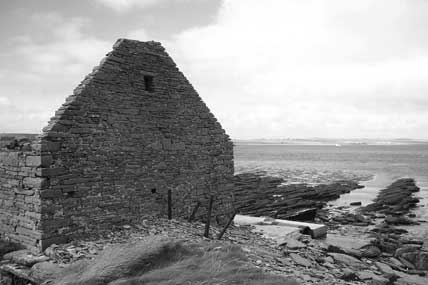 |
||||||||
| There has been a watermill on the narrow neck of land between St. Tredwell's Loch andthe sea since the early 17th century. | ||||||||
| Jocelin
Rendall. Papay - A Guide to Places of Interest. Papay Publications
1992. ISBN 1-874755-02-7 |
||||||||
| CARSIES | ||||||||
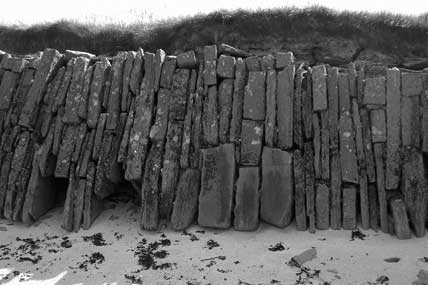 |
||||||||
| Carsies used to protect the shors of Papay from the sea erossion. Now only small fragmets of carsies are remaining and bigges fragment can be seen next to the Watermill | ||||||||
| SAMPLES OF VERNACULAR ARCHITECTURE | ||||||||
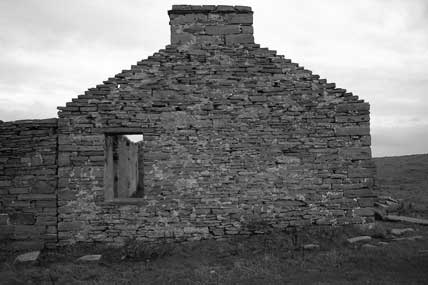 |
||||||||
|
||||||||
| Fine
samples of traditional stone buildings with flag stone roofs can be
seen around the island - some are abandoned and derelict, some are
inhabited for hundreds of years and well kept without much changes,
some are carefuly restored Some house names from Papay census 1851: Hundland Ness Gowrie Whitelooms Stripes Clestran Newbiggin Quoise Nort Via Sooth Via Breck Hinsobreck Cott Midhoos Shorehoos Maybo Skeness Sunibraes Newhouse Nouster Daybreck Manse Links Hookin Quarryhoos Dykeside Bilbo Schoolhouse Holland Bolisbel Edgeriggs Brecaskail Garbols Bacaskaill Hindbrae Peatwall Rendall Quoyolie Myrie Whitehowe Gayfield Nistaben Vestness |
||||||||
| CRUES, SOUTH OF FOWL CRAIG | ||||||||
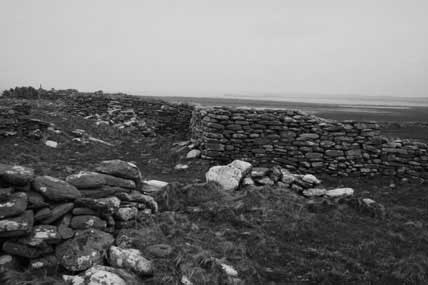 |
||||||||
| Ruins of the crues - small walled enclosures used for growing vegetables and penning geese are creating an athmophers of an abandon ancient city | ||||||||
| FOWL CRAIG | ||||||||
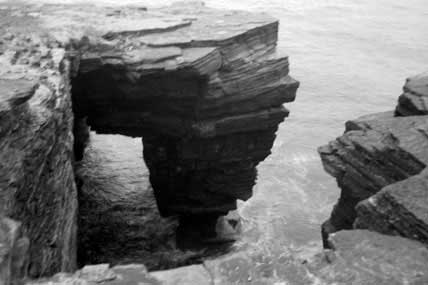 |
||||||||
| A sculptural cliffs of Fowl Craig are nesting ground for puffins and the place where in 1813 the last Great Auk was killed | ||||||||
| COAST AND LANDSCAPE | ||||||||
 |
||||||||
|
||||||||
| To
see Papay in full colour and to find out more about the island please
book a Papay Peedie Tour with Jim Rendall through the Papay Co-Op MORE INFORMATION ABOUT PAPAY: PAPA WESTRAY - information about Papay THE PAPAR PROJECT BOOKS ABOUT PAPAY - available from online bookstores ORKNEYJAR - the heritage of Orkney GEORGE PETRIE AND THE "BROCHS" OF PAPA WESTRAY - by Christopher Lowe WESTRAY SKIFF - boat building tradition in Papay |
||||||||
